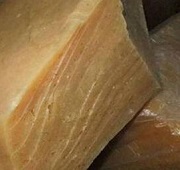Butadiene rubbers are a part of an elastomer family, which comprises natural rubber (NR), styrene-butadiene rubbers (SBRs), polybutadiene rubber (PBR), butyl rubber (IIR) and ethylene-propylene-diene-monomer rubber (EPDM).
The global market for butadiene rubbers is currently in transition. Since the bulk of their consumption is in tire manufacturing, the transformation of the automotive sector becomes a major force of this transition. Driven by a necessity to become greener, smarter and more economical, the automotive and tire sectors are also in a state of flux now. The recently held Tire Technology Expo 2019 (the event was held in Hannover, Germany, in March 2019) and upcoming International Exhibition on Rubber Technology (it will occur in Shanghai, China, in September 2019) are in capacity to fully substantiate this trend.
There are a number of new challenges, which face the automotive and tire sectors. Such challenges include the following: tightening regulations for limiting carbon dioxide (CO2) emissions, the constant urge to decrease fuel consumption, the growing electric car fleet and the arrival of autonomously driving vehicles. All these require a new range of modern butadiene rubber products, which need to support the ongoing changes. For instance, the Buna range of butadiene rubbers manufactured by ARLANXEO, a world-leading synthetic rubber company, can offer such products. ARLANXEO’s neodymium catalyzed polybutadienes (Nd-BRs) are highly elastic polymers with excellent tire performance in multiple parameters, including the resistance to dynamic stress, impermeability, grip, rolling resistance, fuel consumption, and high durability. ARLANXEO’s high-performance elastomers are also used in various non-tire applications, including adhesives, asphalt, foam and carpet backing, conveyor belts, hoses, damping components, lining and coating, footwear, sealing products, sports accessories, medicine, and pharmaceuticals, etc.
Apart from quality and performance considerations, quantity concerns are also eminent. The growing need in butadiene rubbers often gives birth to instantaneous and continuous market imbalances when certain regions of the world become import-dependent. For instance, China, despite enormous and growing styrene-butadiene rubber (SBR) capacity (which exceeds 2 mln tonnes) and a reputation of a number one manufacturer of almost every chemical product, still remains dependent on SBR import. Its export-import SBR trade balance dynamics has been negative for many years. In 2019, China’s SBR imports are expected to exceed 500 thous. tonnes, while SBR exports might turn out to be ten times smaller.
A detailed analysis of the global butadiene rubbers market is available in the in-demand research report “Butadiene Rubbers: 2019 Global Industry Overview and Forecast”.
